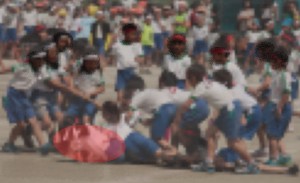Japan has a reputation for being a country of readers. Until the advent of the smart phone–now everyone’s playing games/texting–it was common to see most people on a train reading books. They would even do this in crowded trains when there was barely enough extra space for air. (On at least two occasions I had to remind people standing next to me or behind me that I was not a book rest and not a particularly nice person.)
The truth is, though, that a good portion of those readers were reading comic books and that a good portion of those were reading comic books that most people in the West would only read alone in the bathroom because they were, how shall I say, graphic depictions of people knowing each other in a Biblical sense often in ways the Bible says are worthy of an execution. They also regularly featured characters too young to have started junior high school.
This version of lolita culture was, at the time, so common that I saw two teachers exchange school girl themed porn videos in the teachers’ office as if it was a natural thing to do, and had to chase two adult students away from the school girl uniform they were oggling during class. After I told them to step away from it they said “but you get to see them everyday” and I was like “step away from the uniform” while my brain was trying to pretend I hadn’t heard that. (For the record, the uniform was in class because it was being passed between two mothers, one whose daughter had finished junior high and the other whose daughter was about to start.)
The worst parts of this culture are changing, though, mostly by force of law. When I still lived in Niigata, I remember looking down a row of magazines in a bookstore and seeing, in pretty much this order: car magazine, literature magazine, child nudity, sumo magazine and, well, I never got to the end of the row because I’m still shocked at what was basically the equivalent of a Playboy magazine for Russian sixth graders. Nothing was covered; it was displayed as if it were normal. Sadly, at that time, it was. Chiaki Kuriyama (Go Go Yubari in Kill Bill) started her modeling career by doing a nude photo book at the age of 12. The book was a best seller.
I remember this mostly because of the controversy it generated and the fact that Japanese law changed soon after her photo book was released to ban the production (although not the possession) of such materials. I also remember that, because she was topless on the cover, the local bookstore had placed the price label in a strategic location.
Raunchy comic books, however, persisted. Soon after I started working at my current school, I confiscated a comic book from one of my 7th graders. I won’t go into details for fear this gets blocked by filters, but I will say it was elementary school girls, various animals and all nasty.
Recently, Japanese law changed to control these magazines as well. Normally I’d be against government involvement in such things, but some things pose an interesting challenge to even the most heartfelt ideals and some things just shouldn’t be.


